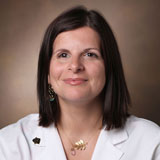A multidisciplinary team of microbiome researchers at Vanderbilt University is shedding light on necrotizing enterocolitis (NEC), a disease of prematurity that kills hundreds of babies and costs the U.S. health care system an estimated $5 billion a year.
Defined by the late Nobel laureate Joshua Lederberg as the “community” of microorganisms “that literally share our body space,” the microbiome (or microbiota) interacts with the body’s immune system to ensure healthy functioning of the digestive tract.
In NEC, this “cross-talk” seems to go wrong, leading to necrosis of the mucosal lining at the junction of the small and large intestines. About 40 percent of patients require surgery to remove the diseased tissue. Yet the condition is notoriously difficult to predict or prevent.

Scientists had hoped the newborn’s stool might provide a biomarker, but they’ve not identified a single pathogen or even a microbiome ‘pattern’ specific for the disease or consistent across different studies. No “silver bullet,” said Jörn-Hendrik Weitkamp, M.D., assistant professor of Pediatrics in the Division of Neonatology.
Now, in a study of infants without NEC but who had part of their intestines removed for anatomical or other reasons, the Vanderbilt researchers found that the microbiome of the intestine is very different from that found in the stool even within the same patient.
“In addition, we detected an unprecedented microbial diversity in intestinal tissue sections … even in preterm infants who were born by C-section and who were just a couple of days old without ever having been fed,” said Weitkamp, senior author of the report.
The findings, published on-line recently by the journal Gut Microbes, support a “top-to-bottom” pattern of microbial colonization — from mouth to gut — that may occur even before birth.
Although not yet completely understood, a diverse bacterial community may be ingested when the fetus swallows amniotic fluid, said Joann Romano-Keeler, M.D., instructor in Pediatrics and the paper’s first author.

This challenges conventional wisdom that the fetal gut is “sterile,” she said, and suggests that what goes on in the intestinal tissue could help scientists interpret the microbiome findings they’re uncovering in stool.
The study was conducted by investigators in Biological Sciences, Biostatistics, Pathology, Pediatric Surgery and Pediatrics/Neonatology. “This unique tissue microbiome project was only feasible by pooling the collective talents in different specialties across campus,” Romano-Keeler said.
It also led to the formation of one of the nation’s largest neonatal intestinal tissue biorepositories, to which researchers around the country submit tissue samples and from which they pull samples to aid their own research.
Weitkamp credited Vanderbilt’s collaborative environment with making it possible “for the first time to map the term and preterm microbiome shortly after birth from the small intestinal mucosa, which is typically not accessible through endoscopy … in this fragile population.”
Defined by X-ray findings that suggest bacterial invasion into the premature gut wall one to five weeks after birth, NEC is on the rise as more premature babies survive. Yet “it is so unpredictable,” Weitkamp said. “That is the scary part.”
Early colonization normally is a good thing, because “signaling from the microbes with the immune system is imperative for development of good health,” including a well-functioning digestive tract, Romano-Keeler said.
In adults, the microbiota is well established and separated from immune cells, “like a two-bedroom apartment,” she continued. But in babies under age 2, who have a weaker barrier, “their microbiota is just moving in without much separation from the immune system … like studio living.”
“Some very interesting conversations are probably going on” between immune cells and the emerging microbiome in babies, Romano-Keeler said. And depending upon the nature of these “discussions,” they may be set up for “both normal and aberrant health outcomes.”
The research was supported by pilot grants from the Vanderbilt Digestive Disease Research Center and Vanderbilt Institute for Clinical and Translational Research, National Institutes of Health (NIH) grants HD068256, HD061607 and DK090146, the National Science Foundation and an American Academy of Pediatrics Marshall Klaus Perinatal Research Award.
Other Vanderbilt co-authors were Daniel Moore, M.D., Ph.D., Robert Brucker, Ph.D., Christopher Fonnesbeck, Ph.D., James Slaughter, Dr.PH, Haijing Li, Ph.D., Danielle Curran, Shufang Meng, Hernan Correa, M.D., Harold Lovvorn III, M.D., Seth Bordenstein, Ph.D., and Alfred George Jr., M.D.
Chunlin Wang, Ph.D., of Stanford University, and Yi-Wei Tang, M.D., Ph.D., of Memorial Sloan Cancer Center, also contributed to the study.












